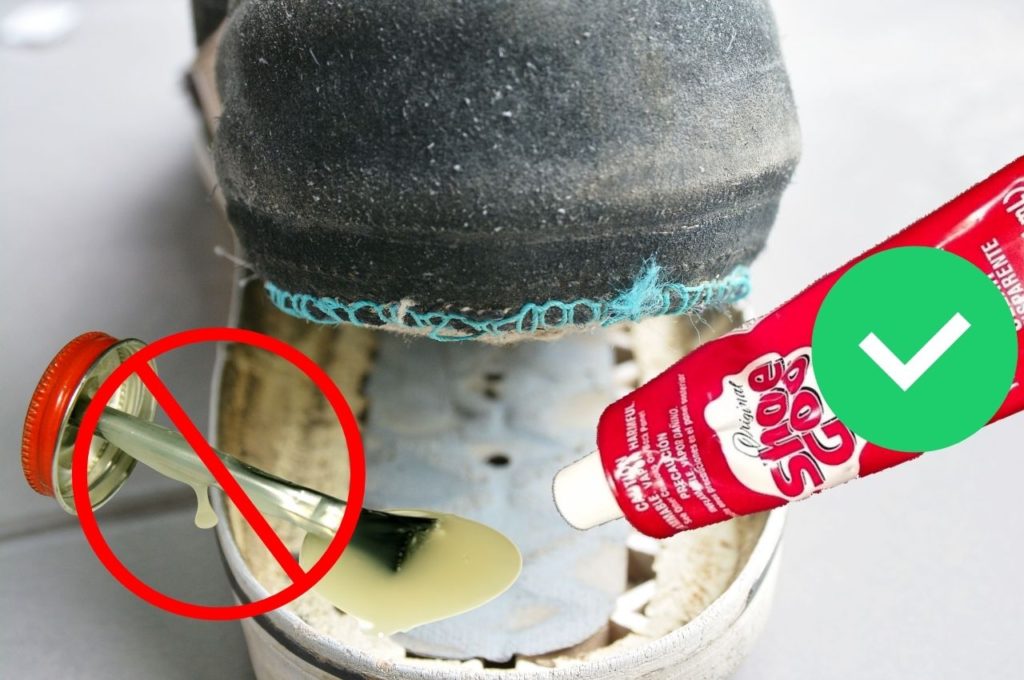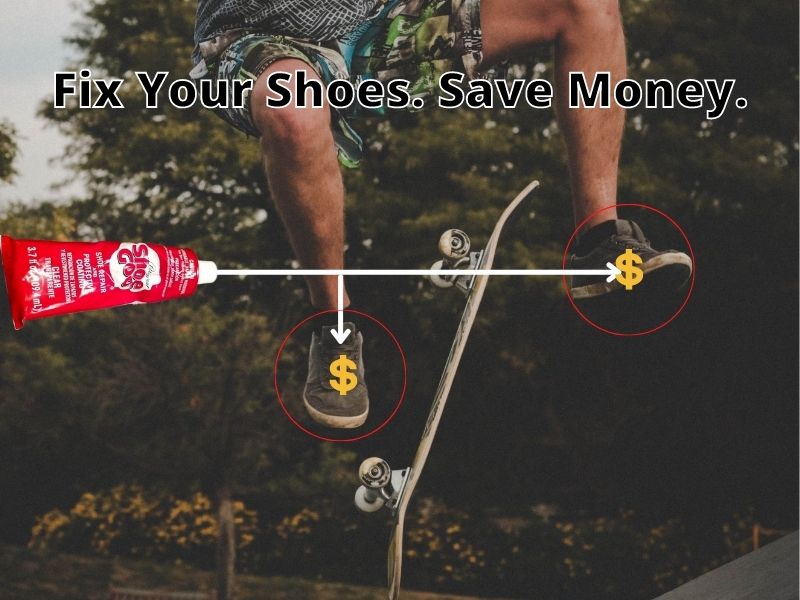We can all admit that we have spent too much money on our shoes every once in a while. Sometimes we spend just as much trying to fix our shoes. Luckily Shoe Goo is there to save us from spending too much and still getting great results.
Shoe Goo is a type of adhesive that acts similar to cement when it hardens. Unlike other adhesives, it doesn’t just stick separated soles together but actually bonds with your shoe. After curing, Shoe Goo will most likely fix most problems that your shoe has or might have in the future.
Keep reading and you’ll find out how shoe Goo can glue parts together, patch holes, and add a layer to your sole to provide shoes with an effective way to help them last longer. You can save the shoes you love and save money at the same time.
Shoe Goo vs Different Adhesives

Shoe Goo is a rubbery/glue type of adhesive that hardens in a similar manner to cement instead of just sticking to the soles. The consistency of shoe goo is different from other glues. It stays in place much easier and is easier to work with. That makes fixing all the parts of your shoes, such as holes, worn-out soles, and even waterproofing, much easier.
The difference between Shoe Goo and any other adhesives is that Shoe Goo bonds well with your shoe. Rubber cement can work well but is hard to work with. Shoe Goo, on the other hand, is thicker, making it easier to use.
It can also act as a sealant that can fill up holes and add layers to destroyed soles, and believe it or not; it can also be used to waterproof the fabric of your footwear. Just build a layer on the sole so it matches the rest of the sole for an even walking surface.
Shoe Goo is infamously used by skaters to add more protection to their shoes from immediately damaging from their skateboard’s sandpaper-like grip tape where they drastically scrape some parts of their shoes.
Can Shoe Goo Work During Winter?
Shoe Goo is known for its highly waterproof advantages and its high resistance to sudden environmental change. Because of its cement-like bonding, it doesn’t just simply stick to any surface but it kind of becomes part of it.
Shoe Goo’s durability has been tested during winter and as a matter of fact, It has been a great shoe fix even in Canadian winters! It can either be a great solution or a permanent fix if you are trying to save your shoes.
Imagine putting cement on bricks in order to make a wall. Once dry, the wall becomes one piece. No matter rain or snow, the wall stays solid. That is exactly how Shoe Goo works. It doesn’t wrinkle or decrease as it cures but it hardens and bonds with the shoe material.
Save Money By Fixing Your Shoe With Shoe Goo

If you are a very active type of person, you would normally go for a heavy run daily or even a hike every weekend. With all these activities, you can go through your shoes quickly.
Skaters know how thrashed their shoes can get in just a couple of weeks of riding their skateboards. To save money, many of them opt to use Shoe Goo to patch a hole by placing a cloth patch inside their shoe and covering it with Shoe Goo. That way, they can fix their shoes instead of buying new shoes.
Your shoe soles can typically wear out in 6-12 months if wearing them daily. The soles of your shoes may get thinner in the same spot where you put your weight and in the same fashion each and every time.
It may seem like a waste of money because the shoes were perfectly fine except for the soles that have been starting to give up. Who wouldn’t want to wear them as long as they could, right?
Worn-out soles are a big no-no since water can possibly pass through the thin layer of soles and might wet your socks and make your toes cold through rainy days. It may sound really unpleasant, don’t you think?
In my personal experience with skating, I know that skaters primarily use the same foot to strike the ground to maneuver around. As a result, they wear out the soles of their shoes in record time. To save cash, they apply shoe goo to rebuild the soles of their shoe and prevent them from buying new pairs just to break again.
So I think instead of spending $30-$40 every once in a while just to replace broken and worn-out shoes, you can avoid these forthcoming issues and use Shoe Goo to maintain and fix those annoying shoe problems you have.
Another great reason to use Shoe Goo is that you can fix a variety of household issues with it. You can use it on metals, wood, concrete, and fabrics.
Advantages and Disadvantages Of Shoe Goo
Advantages
- It is a trusted and proven product
- Fixes your shoe with a strong bond
- Highly waterproof
- Heavy-duty use
- Hardens to a rubbery, flexible consistency
- It’s very cheap and long-lasting
Disadvantages
- It can take 24 hours or more to fully cure
- It can be really messy to work with
- Doesn’t last as long as a rubber sole
- Can possibly be broken in unexpected circumstances
Conclusion
Shoes are an essential article of clothing we use for our daily activities. But like all clothing, our shoes start to wear out over time. Thankfully, with the use of glues like Shoe Goo, we can conveniently and easily save money with our footwear.
Shoe Goo is actually a life-saving adhesive for me because it doesn’t just help me with all the many problems of my favorite sneakers it also helps me to save more money on other important stuff that I want to get.
The durability and long-lasting effects of Shoe Goo make it something I’ve always been grateful for. I guess the only bad thing about it is if you wanted to get rid of the Shoe Goo on your shoes, you would need to sand it, cut it, or rip it off.
I hope you find Shoe Goo as helpful to you as it has been for me.
Thanks for visiting Helpshoe.com
References
https://www.yournextshoes.com/
https://ezinearticles.com/ (Update: Website no longer working)

